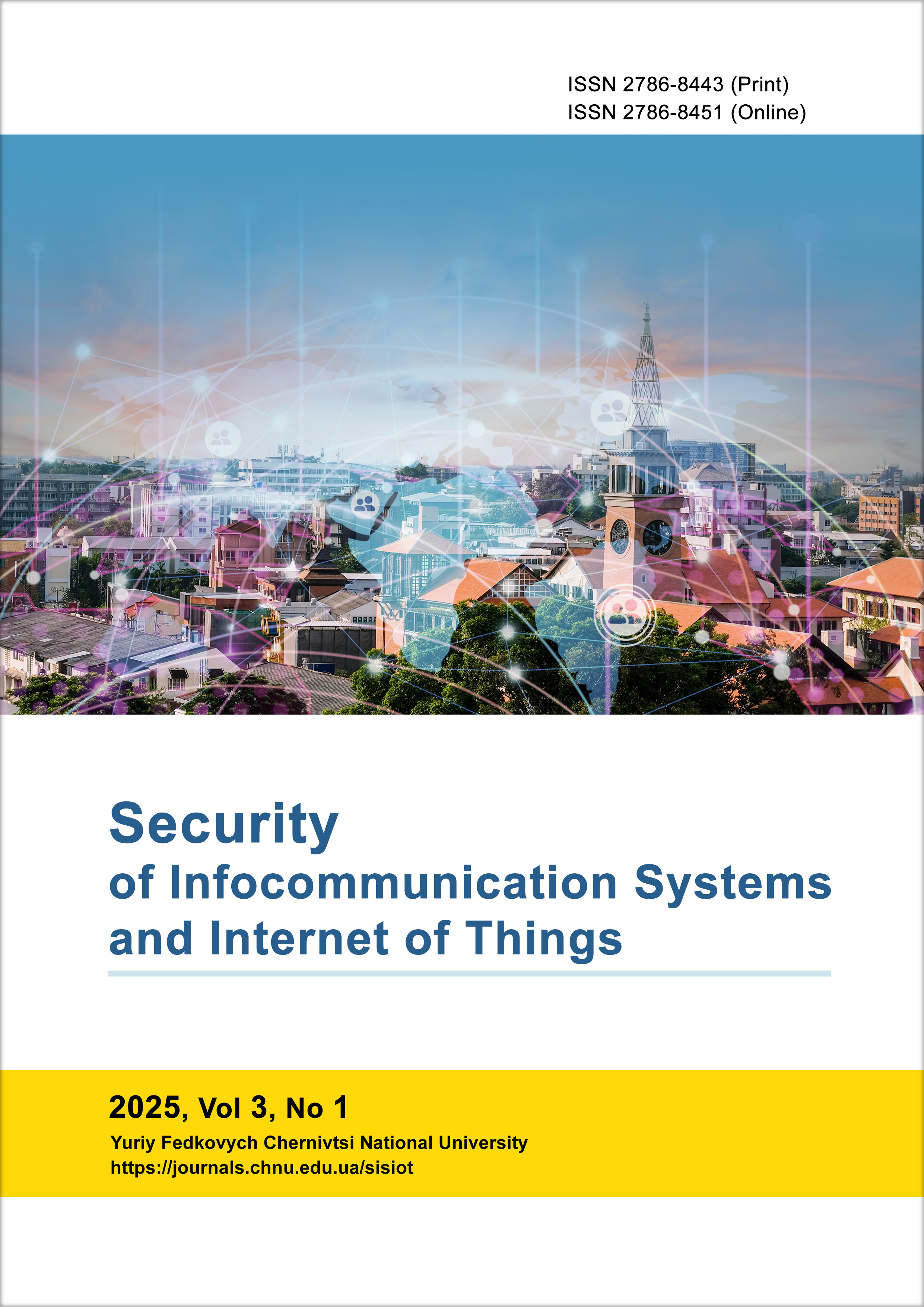Investigation of Statistical Characteristics of Random Number Sequences Generated by a Webcam Using Cellular Automata Functionality and NIST Patterns
DOI:
https://doi.org/10.31861/sisiot2025.1.01007Keywords:
software engineering, cybersecurity, random number sequences, webcam, cellular automataAbstract
At the current stage of development, software-based random number generation is increasingly vulnerable to attacks due to the growing computational power of modern systems. Hardware-based generation relies on reliable stochastic physical phenomena, yet often demonstrates low throughput or an insufficient level of statistical quality. In this study, linear cellular automata are utilized as a post-processing mechanism aimed at improving key statistical properties of the random number sequences. The study presents the results of improving the statistical properties of number sequences obtained from a standard webcam with regard to one of the key cryptographic requirements – uniform distribution of values. Prior analyses revealed that inherent stochastic behavior within webcam sensors produces irregular, non-uniform distributions in the output sequences. This limitation can be mitigated by post-processing using linear cellular automata, specifically employing rules 30, 90, 105, and 150. To evaluate the effectiveness of this method, a comparative analysis was conducted against software-generated sequences produced via the Java SecureRandom class. It is shown that by applying a sufficient number of iterations, it is possible to achieve the required level of uniformity in the distribution of sequence elements. However, the generated sequences did not fully pass the NIST test suite. Statistical uniformity was assessed efficiently using lightweight Java-based libraries, enabling rapid integration even on low-performance hardware such as smartphones. The research findings can be applied in the design of a hardware-based random number generator.
Downloads
References
A. Rukhin, J. Soto, J. Nechvatal, M. Smid, E. Barker, S. Leigh, M. Levenson, M. Vangel, D. Banks, A. Heckert, J. Dray, S. Vo, and L. E. Bassham III, A Statistical Test Suite for Random and Pseudorandom Number Generators for Cryptographic Applications, NIST Spec. Publ. 800-22 Rev. 1a, Apr. 2010.
D. Dobrovolsky, D. Hanzhelo, H. Prokhorov, and D. Trembach, “Research the level of chaotic and reliability in webcam-generated random number sequences,” SISIOT, vol. 2, no. 1, p. 01004, Aug. 2024, doi: 10.31861/sisiot2024.1.01004.
D. Hanzhelo and H. Prokhorov, “Investigation of statistical characteristics of numerical random sequence obtained from a web camera frame,” Herald of Khmelnytskyi Natl. Univ. Techn. Sci., vol. 337, no. 3(2), pp. 46–51, 2024, doi: 10.31891/2307-5732-2024-337-3-6.
S. Ostapov, B. Diakonenko, M. Fylypiuk, K. Hazdiuk, L. Shumyliak, and O. Tarnovetska, “Symmetrical cryptosystems based on cellular automata,” Int. J. Comput., vol. 22, no. 1, pp. 15–20, Mar. 2023, doi: 10.47839/ijc.22.1.2874.
T. Toffoli and N. Margolus, Cellular Automata Machines. Cambridge, MA: MIT Press, 1987.
H. Prokhorov and D. Trembach, “Research into the efficiency of processing a numerical random sequence by chaotic-type cellular automata,” SISIOT, vol. 2, no. 2, p. 02010, Dec. 2024, doi: 10.31861/sisiot2024.2.02010.
National Institute of Standards and Technology (NIST), A Statistical Test Suite for Random and Pseudorandom Number Generators for Cryptographic Applications, NIST Spec. Publ. 800-22 Rev. 1, Aug. 2008.
F. J. Ibáñez-López, M. Rubio-Aparicio, M. Pedreño-Plana, and M. Sánchez-Martín, “Descriptive statistics and basic graphs tutorial to help you succeed in statistical analysis,” Espiral. Cuadernos del Profesorado, vol. 17, no. 36, pp. 88–99, 2024, doi: 10.25115/ecp.v17i36.9570.
L. Crocetti, P. Nannipieri, S. Di Matteo, L. Fanucci, and S. Saponara, “Review of methodologies and metrics for assessing the quality of random number generators,” Electronics, vol. 12, no. 3, p. 723, 2023, doi: 10.3390/electronics12030723.
A. Jammi, Y. Raju, S. Munishankaraiah, and K. Srinivas, “Steganography: an overview,” Int. J. Eng. Sci. Technol., vol. 2, no. 10, pp. 5985–5992, 2010.
Published
Issue
Section
License
Copyright (c) 2025 Security of Infocommunication Systems and Internet of Things

This work is licensed under a Creative Commons Attribution 4.0 International License.









